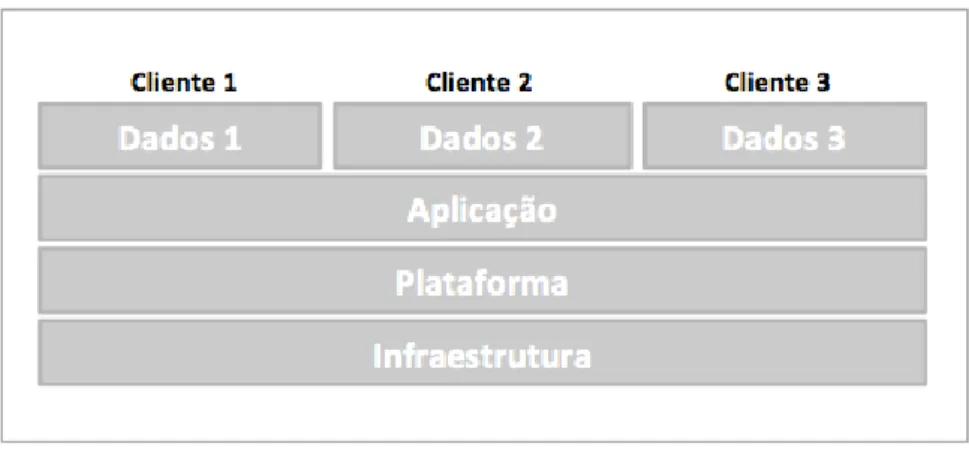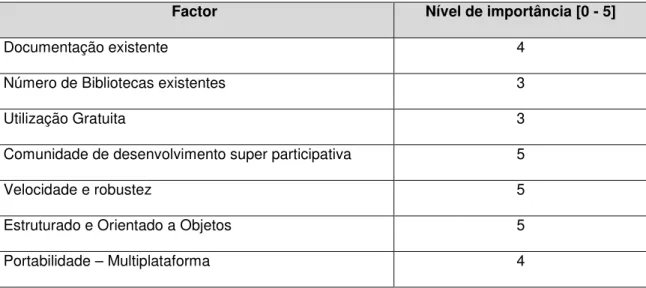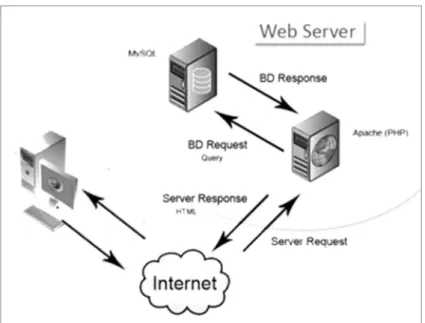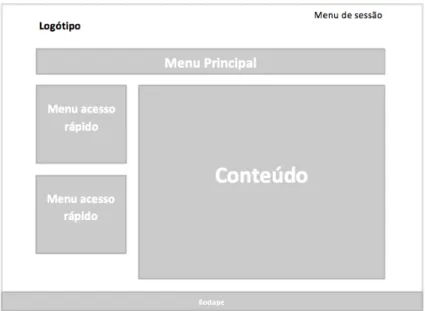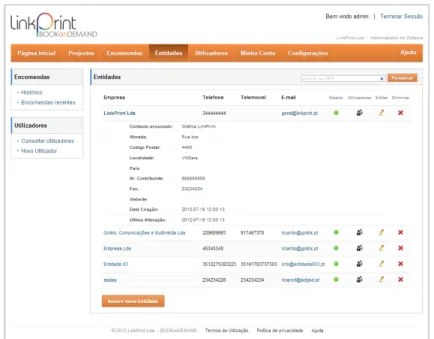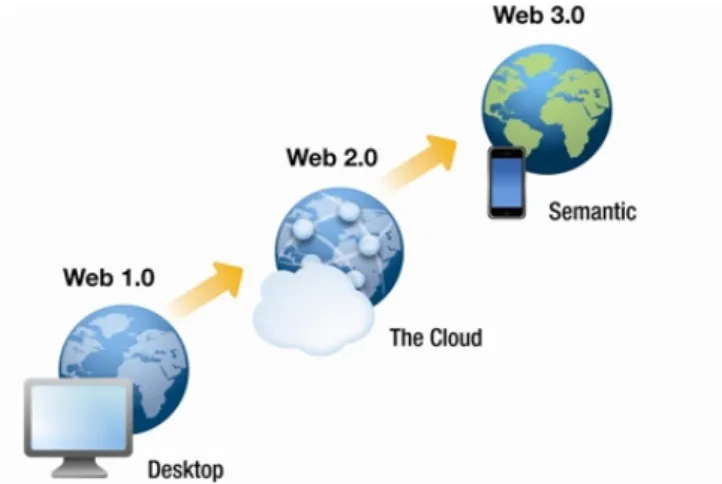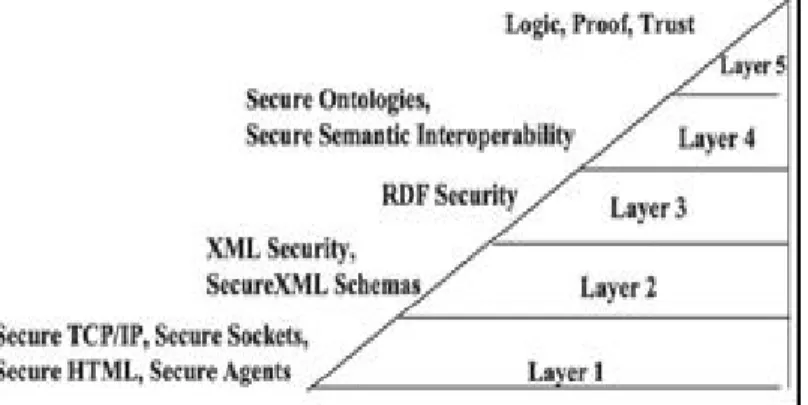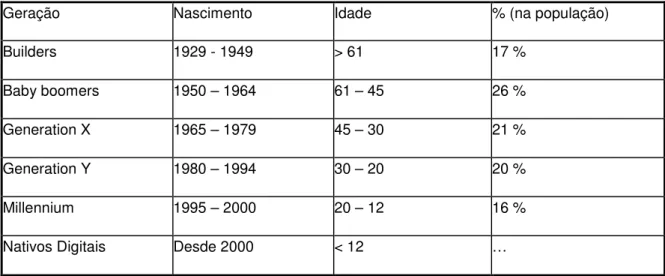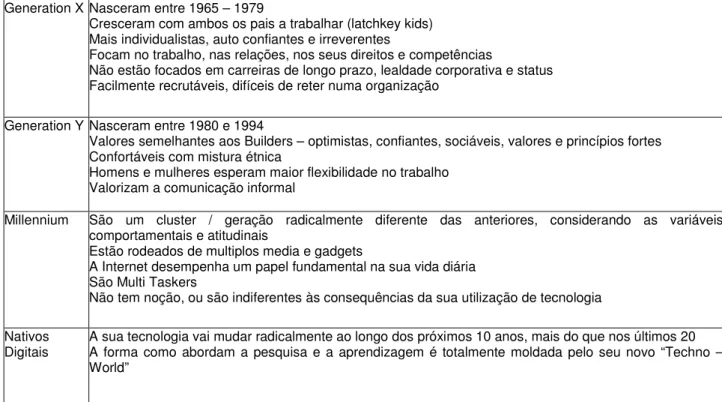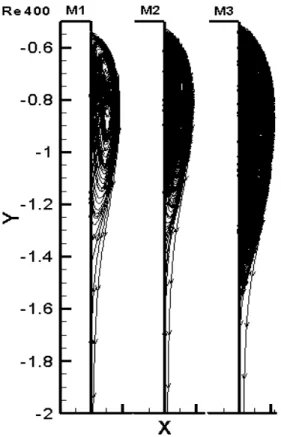• Gestão e submissão de projetos para produção de livros a pedido Teixeira, R. & Almeida, F.
• Problemas de segurança na Web Semântica
Rocha, A., Constantino, J. & Almeida, F.
• Cultura digital, cultura híbrida: sugestões para um olhar sobre gerações e
tecnologias na sociedade contemporânea Moretti, G.
• Investimento e aplicação de recursos na educação municipal brasileira:
ausência de planejamento ou de competência técnica Oliveira, R., Santos, R. & Souza, C.
• Escoamento de fluido newtoniano através da junção de dois canais planos:
estudo do efeito de inércia Silva, A., Jorge, D.F. & Rocha, G.
Nº 19 Dezembro de 2012
Instituto Superior Politécnico Gaya www.ispgaya.pt
Politécnica
.
Nº 19
.
Dezembro de 2012
Pág. 2
Ficha Técnica
Diretor Subdiretor Editor Coordenação e Revisão Editorial Administração e Redação Propriedade ISSN Depósito Legal FrequênciaJoão de Freitas Ferreira Justino Lourenço João de Freitas Ferreira
Ana Paula Cabral
José Carlos Pereira de Morais
Instituto Superior Politécnico Gaya Av. Dos descobrimentos, 333 4400-103 Vila Nova de Gaia Tel. 22 374 57 30/33 Fax 22 374 57 39
CEP – Cooperativa de Ensino Politécnico, CRL
0874-8799 153750/00
Anual Vol. Nº 19
Instituto Superior Politécnico Gaya www.ispgaya.pt
Politécnica
.
Nº 19
.
Dezembro de 2012
Pág. 3
Índice
Pág.
Gestão e submissão de projetos para produção de livros a pedido ………...…. 4 Teixeira, R. & Almeida, F.
Problemas de segurança na Web Semântica ……… 20 Rocha, A., Constantino, J. & Almeida, F.
Cultura digital, cultura híbrida: sugestões para um olhar sobre gerações e
tecnologias na sociedade contemporânea ………...………. 36 Moretti, G.
Investimento e aplicação de recursos na educação municipal brasileira:
ausência de planejamento ou de competência técnica ……….………. 48 Oliveira, R., Santos, R. & Souza, C.
Escoamento de fluido newtoniano através da junção de dois canais planos: estudo do efeito de inércia ………..………. 56 Silva, A., Jorge, D.F., & Rocha, G.
Instituto Superior Politécnico Gaya www.ispgaya.pt
Politécnica
.
Nº 19
.
Dezembro de 2012
Pág. 4
GESTÃO E SUBMISSÃO DE PROJETOS PARA
PRODUÇÃO DE LIVROS A PEDIDO
Ricardo Alexandre Quental Teixeira, ei072285@ispgaya.pt
Aluno da licenciatura em Engenharia Informática do Instituto Superior Politécnico Gaya Fernando Almeida, falmeida@ispgaya.pt
Docente do ISPGaya
Resumo: A impressão digital está a revolucionar o mercado da edição livreira, sendo dispensadas as tradicionais tarefas preparatórias usadas em offset. Dadas as suas vantagens económicas e operacionais, surge o conceito de impressão a pedido, que tem sido crescentemente utilizada na produção.
A LinkPrint especializou-se na produção de obras literárias, adquirindo a primeira e única linha de impressão digital em Portugal. Apesar de toda a tecnologia, a gestão e receção de projetos é muito deficiente, neste sentido proponho a criação de uma plataforma de Gestão e Submissão de Projetos para Produção de Livros a Pedido baseada em tecnologias web, que visa colmatar falhas existentes no processo atual, presenteando com uma gestão centralizada e bastante flexível.
Palavras-chave: Impressão digital, livros a pedido, impressão a pedido, gestão de projetos literários.
MANAGEMENT PLATFORM FOR THE SUBMISSION OF
ON-DEMAND BOOK PUBLISHING PROJECTS
Abstract: Digital printing, a method by which the preparatory tasks involved in offset printing
are no longer required, is revolutionizing the book publishing industry. The operational and economic advantages of digital printing have led to the appearance of 'printing on demand', a growing area in the book production industry.
LinkPrint is a company that specializes in the production of literary works, and possesses the first, and only, digital production line in Portugal. Despite the large amount of technology available, the reception and management of projects has so far been found to be somewhat lacking, in this sense, I propose the creation of a Management Platform for the Submission of On-Demand Book Publishing Projects, based on Web technology, aims to correct the faults that exist in the current process by means of a management system that is both centralized and flexible.
Instituto Superior Politécnico Gaya www.ispgaya.pt
Politécnica
.
Nº 19
.
Dezembro de 2012
Pág. 5
INTRODUÇÃOUm dos maiores problemas das Editoras são os elevados custos que possuem com a gestão de stock, tendo a necessidade de dar ordens de impressão de grandes volumes, para obterem um preço competitivo e vantajoso para a sua comercialização, mas por vezes, as previsões de venda não superam as expectativas, ficando muitas vezes com grandes quantidades armazenadas. A impressão digital procura eliminar este problema, assim como reduzir a logística necessária para manter stocks.
Apesar de todas as vantagens existentes, e de toda a tecnologia envolvida, entre a receção do projeto literário em formato digital, passando pela revisão, aprovação e ordem de impressão, por vezes torna-se complicada a sua gestão, podendo mesmo originar pontos de falha e erros que podem ser prejudiciais na relação com o seu cliente.
Como tal, o principal objetivo deste projeto é a disponibilização de uma plataforma em ambiente web acedida por clientes da gráfica e seus operadores. Tem como objectivo centralizar e facilitar a gestão, permitindo sem uma única troca de palavras entre cliente e gráfica, submeter conteúdo, dar ordem de impressão e receber a encomenda, o que traduz numa redução no tempo de produção.
Concludentemente a ferramenta assumirá um papel essencial, tanto do ponto de vista de uma evolução e ambição. Permitindo à gráfica enfrentar novos desafios e exigências que lhe são colocadas pelo meio envolvente.
Este artigo tem por objetivo contextualizar a conceção deste projeto. São abordados inicialmente alguns conceitos sobre a temática da impressão digital em particular na impressão a pedido, são igualmente abordados os instrumentos e tecnologias usadas na concepção. Seguidamente é apresentado a metodologia adoptada para o desenvolvimento da plataforma. Finalmente são abordados os resultados obtidos nas ações implementadas, assim como identificados possíveis crescimentos da plataforma.
2. BASES TEÓRICAS 2.1 Just-in-time
Cada vez mais se tem falado no princípio do Just-In-Time, o termo entrou no vocabulário da gestão na década de 80 e, hoje, já são poucos os gestores que não ouviram falar deste método de gerir as existências (PME Negócios, n.d.). Mas o que poucos responsáveis conhecem verdadeiramente são as condições de implementação deste sistema na empresa. O Just-in-time é muito mais do que uma técnica de controlo, ou um sistema para gerir e reduzir ao mínimo os stocks (Wikipedia, 2012a). Alguns autores consideram mesmo o Just-in-time como uma filosofia industrial global. Em termos muito simples, trata-se de um método que visa eliminar todas as fontes de desperdício, eliminar tudo o que não acrescenta valor à empresa (PME Negócios, 2012).
Instituto Superior Politécnico Gaya www.ispgaya.pt
Politécnica
.
Nº 19
.
Dezembro de 2012
Pág. 6
Frequentemente, o Just-in-time é associado a um princípio de organização destinado à grande indústria, que só faz sentido em grandes unidades de produção. Mas esta técnica de gestão, nada tem a ver com séries de produção repetitivas nem longas mas sim com prazos reduzidos e com produção de pequenas quantidades, assim, esta é uma técnica de gestão perfeitamente adaptável às Pequenas e Médias Empresas (PME Negócios, 2012).Just-in-time em produção de obras literárias só é possível com uma linha de impressão digital, que permite produzir os livros à medida das encomendas, sem necessidade de tiragens prévias (Sítio do Livro, 2012).
A plataforma ajudará a atingir este princípio de gestão, conseguindo preços e prazos de produção muito reduzidos. A desvantagem e dificuldade consiste nas incertezas da envolvente da empresa, o exemplo de uma greve nos transportes é a mais evidente, tudo pode ficar parado. Por isso, algumas empresas, além de um sistema de Just-in-time, mantêm também o "just in case", algum stock de segurança que permitirá evitar perdas no caso de problemas com a envolvente, nomeadamente os fornecedores (Marques, 1998, p. 103).
2.2. Impressão a Pedido
Chamado de “POD”, ou Print On Demand (impressão a pedido), procura juntar o livro digital e a experiência tradicional dos livros, o qual se usa tecnologia de reprografia digital para se imprimir um conteúdo editado e guardado em formato electrónico. Podem-se imprimir um a um os exemplares pretendidos, sem aumento do seu custo unitário e em qualquer momento se podem reimprimir mais exemplares. Os principais fabricantes internacionais de equipamentos de impressão digital (HP, EPSON, XEROX, OCÊ, entre outros) têm vindo a desenvolver máquinas de uso profissional, tecnicamente muito sofisticadas e potentes, capazes de imprimir em grande velocidade, com extrema qualidade gráfica, seja em preto ou cor e quase em qualquer tipo de suporte – papel ou outro – de qualquer formato, em folha ou rolo e que permitem encadernações e acabamentos em tudo idênticos aos tradicionalmente usados (Sítio do Livro, 2012).
Este processo traz consequências revolucionárias para o ramo das editoras, eliminando muitos problemas relacionados com a gestão de stock por exemplo, assim como operações logísticas (Amanda Garcia, 2011).
De acordo com (Isabel Coutinho, 2012) a obra The Sequel first lines from the classics of the
future by inventive imposters foi produzida, em 48 horas, no recinto de uma feira em Nova
Iorque. Foi editada, desenhada, paginada em formato digital, após concluída foi criada uma versão impressa. Em poucos minutos, a máquina de “print on demand”, ligada a um computador onde existia o ficheiro informático com o livro, imprimiu, organizou as páginas, cortou-as, fez a capa (a cores e brilhante), encaixou-a no maço de folhas e colou tudo. Em poucos minutos, a máquina imprime cem páginas e de dentro dela sai um livro.
Instituto Superior Politécnico Gaya www.ispgaya.pt
Politécnica
.
Nº 19
.
Dezembro de 2012
Pág. 7
2.3. Análise de Projetos similaresA nível nacional existem várias entidades que possuem portais online para publicação de obras literárias, trata-se de uma livraria online em que os autores podem publicar as suas obras e comercializa-las sem terem de se preocupar com a impressão e logística, a entidade que gere o portal é que trata de todos esses processos. A forma de impressão não é divulgada, mas analisando os prazos mencionados e o número mínimo de exemplares permitidos, certamente que utilizam a impressão digital, própria ou subcontratada.
O sistema utilizado por estas entidades explora o conceito de “book on demand” que possibilita que o escritor publique o seu próprio livro da forma que entender, sem custos iniciais de impressão ou pedidos mínimos de exemplares. Um exemplar só é impresso depois de existir uma encomenda on-line. O autor do livro é que escolhe o preço de venda, sendo que uma margem que varia entre os 10 e os 25 por cento reverte para o portal onde publicou o livro (Eduarda Sousa, 2008). Portais que praticam esta modalidade: http://www.sitiodolivro.pt, http://www.bubok.pt/.
A plataforma inspiratória no desenvolvimento deste projeto, será de um empresa sediada no Canada que tende a explorar todos os conceitos do Print-On-Demand e a criar novas oportunidades de negócio neste setor apresenta-se com o portal lulu.com. Os seus serviços encontram-se disponíveis para todo o mundo em multi-idioma, sendo orientado para todo o tipo de clientes, um escritor final, um estudante, ou uma editora com centenas de obras em carteira (Eduarda Sousa, 2008).
Para além de uma livraria online com milhares de títulos publicados pelos seus utilizadores, possui o serviço de impressão a pedido, enviando o exemplar já impresso para todo o mundo (Lulu Enterprises, 2012).
Os números estatísticos publicados (Lulu Enterprises, 2012) são verdadeiramente impressionantes:
• Em cada 52 segundo há um novo projeto a ser criado;
• Aproximadamente são submetidos 20.000 novos títulos para impressão por mês;
• Mais de 2.5 Milhões de visitantes únicos por mês visitam a sua livraria online (83.000/dia).
2.4. Tecnologias de desenvolvimento envolvidas
A Tecnologia Web foi criada como forma de divulgar o conhecimento científico, mas tem sido utilizada também como mecanismo de acesso a vários tipos de sistemas de informação empresariais, assim como de comunicação entre eles, gerando diversas oportunidades de negócios para as organizações.
Instituto Superior Politécnico Gaya www.ispgaya.pt
Politécnica
.
Nº 19
.
Dezembro de 2012
Pág. 8
PHP - acrónimo de Hipertext Preprocesor. É uma linguagem de programação em que todo o processamento é realizado pelo servidor Web, é gratuita, rápida, com muitas livrarias disponíveis, muita documentação e compatível com todos os browsers (The PHP Group, 2012). HTML - basicamente trata-se de um conjunto de etiquetas (tags) que servem para definir a forma na qual se apresentará o texto e outros elementos da página. É a base de qualquer página web (Wikipedia, 2012b).CSS - permite formatar a apresentação da nossa página web, como incluir margens, tipos de letra, fundos, cores, etc. CSS de Cascading Style Sheets, em português Folhas de Estilo em Cascata (Wikipedia, 2012c).
JavaScript – umas das linguagens mais utilizadas no mundo, muito útil para criar pequenas funções, executadas do lado do cliente.
AJAX - não é uma tecnologia propriamente dita, é uma fusão de tecnologias. (acrónimo em língua inglesa de Asynchronous Javascript and XML), baseia-se em tecnologias como Javascript e XML, tornando as aplicações mais interativas com os utilizadores. A sua principal vantagem é a redução dos dados transferidos entre o servidor e o utilizador (Wikipedia, 2012d). MySql - Com mais de 10 milhões de instalações em tudo o mundo o MySql é o sistema de gestão de base de dados mais utilizado, que utiliza a linguagem SQL como interface (Oracle Corporation , 2012).
HTTPS - HyperText Transfer Protocol Secure, é uma implementação do protocolo HTTP sobre uma camada adicional de segurança que utiliza o protocolo SSL/TLS. Essa camada adicional permite que os dados sejam transmitidos através de uma conexão segura, o que permite verificar a autenticidade do servidor e do cliente através de certificados digitais.
2.5. Modelo SaaS
Software como serviço, do inglês Software as a service, é uma forma de distribuição e comercialização de software. No modelo SaaS o fornecedor do software responsabiliza-se por toda a estrutura necessária para a disponibilização do sistema (servidores, conectividade, cuidados com segurança da informação) e o cliente utiliza o software via internet, pagando um valor pela sua utilização.
Não é necessariamente a tecnologia utilizada que determina o modelo. O software utilizado pode ser 100% web (utilizado via browser) ou pode ter alguma instalação local (como antivírus ou sistemas de backup). A característica principal é a não aquisição das licenças (mas sim pagar pelo uso como um "serviço") e a responsabilidade do fornecedor pela disponibilização do sistema em produção.
Instituto Superior Politécnico Gaya www.ispgaya.pt
Politécnica
.
Nº 19
.
Dezembro de 2012
Pág. 9
• Simplificação na gestão das aplicações – com o decorrer do tempo de utilização do modelo SaaS a gestão das aplicações torna-se mais simples, uma vez que os processos de instalação, atualização e manutenção ficam a cargo dos provedores de serviço SaaS;• Redução do investimento em capital – o modelo SaaS permite a uma empresa reduzir o seu investimento em capital, trocando-o com um aumento do investimento operacional. Neste sentido, a empresa não necessita de ter que manter toda a infraestrutura para executar as suas aplicações, mas apenas paga pelo serviço de ter as suas aplicações executando na nuvem; • Rapidez de implementação – as atividades como instalações e configurações deixam de ser da
responsabilidade da empresa. Adicionalmente, a usabilidade torna-se mais simples e intuitiva; • Maior foco no negócio – a empresa cliente passa a ter mais tempo para se dedicar à sua
atividade principal, deixando a sua componente de TI para os provedores de serviço altamente especializados;
• Acesso a novas funcionalidades – através da adotação do modelo SaaS as atualizações são da responsabilidade do provedor de serviço. Desta forma, as atualizações de software necessárias são feitas de forma eficaz e ágil.
Figura 1 - Modelo SaaS, Software as a Service (wiseGEEK, 2012)
2.6. Modelo MVC
Modelo de desenvolvimento MVC (Model-view-controller), atualmente considerado uma arquitetura padrão utilizada na Engenharia de Software. A camada lógica de negócio foi dividida em camadas de forma a obtermos uma aplicação modular.
Instituto Superior Politécnico Gaya www.ispgaya.pt
Politécnica
.
Nº 19
.
Dezembro de 2012
Pág. 10
Figura 2 - Modelo MVC (Wikipedia, 2012e)A Fig. 2 ilustra o diagrama simplificado exemplificando a relação entre Model, View e Controller. As linhas sólidas indicam associação direta e as tracejadas indicam associação indireta.
O modelo (model) é usado para definir e gerir a informação, a lógica de negócio atribui um significado aos dados sem que seja responsável pela sua gestão, a responsabilidade é do modelo.
A visão (view) apresenta o modelo num formato adequado ao utilizador.
O controlador (controller) recebe a entrada de dados e inicia a resposta ao utilizador ao invocar objetos do modelo.
A justificação do uso do modelo, resume-se à complexidade da aplicação com recurso a uma linguagem orientada a objetos, a necessidade de uma construção modular, torna-se relevante a separação entre os dados e a apresentação. Desta forma, alterações feitas no layout não afetam a manipulação de dados, e estes poderão ser reorganizados sem alterar o layout. Esse padrão resolve este problema através da separação das tarefas de acesso aos dados e lógica de negócio, lógica de apresentação e de interação com o utilizador, introduzindo um componente entre os dois, o controlador (Wikipedia, 2012e).
3. IMPLEMENTAÇÃO
Nesta secção será descrito o processo utilizado para a conceção deste projeto.
Tendo em conta que a plataforma deve ser desenvolvida em ambiente web, é necessário optar por um conjunto de tecnologias, a escolha deverá recair por diversos factores:
Instituto Superior Politécnico Gaya www.ispgaya.pt
Politécnica
.
Nº 19
.
Dezembro de 2012
Pág. 11
Factor Nível de importância [0 - 5]
Documentação existente 4
Número de Bibliotecas existentes 3
Utilização Gratuita 3
Comunidade de desenvolvimento super participativa 5
Velocidade e robustez 5
Estruturado e Orientado a Objetos 5
Portabilidade – Multiplataforma 4
Tabela 1- Importância atribuída a cada factor
Tornou-se também necessário a escolha de um servidor web, a solução passa pela implementação através da utilização do Apache, compatível com todas as tecnologias selecionadas. Como ferramenta de desenvolvimento a escolha recaiu no Dreamweaver da Adobe, oferecendo um ambiente altamente produtivo para o desenvolvimento (Matt Milano, 2011).
3.1 Requisitos Funcionais
Os requisitos funcionais descrevem o comportamento do sistema, representando as suas funcionalidades.
• Gerir Entidades / Clientes: permite à gráfica realizar uma gestão de todos os seus clientes; • Gerir Utilizadores – É crucial para o bom funcionamento da plataforma. Organizado por grupos
com diferentes níveis de acesso, e sempre associados a uma Entidade. A plataforma possui uma área de autenticação através do nome do utilizador e respectiva palavra-chave com base em regras de segurança e níveis de acesso, somente acederá à funcionalidade e dados que lhe dizem respeito;
• Catálogos / Projetos – requisito funcional mais complexo de toda a plataforma, deverá permitir ao utilizador realizar toda a gestão dos projetos de uma determinada entidade. O armazenamento dos ficheiros resultantes de um projeto, terá de cumprir a seguinte estrutura:
Instituto Superior Politécnico Gaya www.ispgaya.pt
Politécnica
.
Nº 19
.
Dezembro de 2012
Pág. 12
Figura 3 - Estrutura física dos ficheiros – organização de um projecto• Encomendas – Consulta de encomendas, alteração de estado, quantidades ou eliminar a ordem de encomenda. As Encomendas são criadas na área de gestão de projetos;
• Configurações – área que possibilita o Administrador do sistema parametrizar a plataforma. Definir tipos de papel, tamanhos, tipos de Capa, permissões de acesso de grupos de utilizadores.
3.2 Requisitos não Funcionais
Os requisitos não funcionais permitem fixar as restrições sobre como os requisitos funcionais serão implementados. No âmbito deste projeto foram considerados requisitos não funcionais a cinco níveis: segurança, usabilidade, confiabilidade, desempenho e suporte.
Em primeiro lugar, o sistema deverá assegurar que não seja permitido o acesso não autorizado ao sistema e aos dados utilizando sessões e acesso seguro adquirindo um certificado digital SSL. Para cumprir este efeito é usado um modelo de criptografia de senha designado por SHA1. Este algoritmo recebe como entrada um documento qualquer sob a forma digital com um tamanho de até 2 elevado a 64 bits, e gera como saída um hash de 160 bits, sendo um pouco mais lento que a chave de criptografia MD5, mas em compensação mais difícil de ser quebrado (M. K. Islam et al., 2012).
A usabilidade pretende tornar a relação entre uma ferramenta e o seu utilizador o mais agradável e fácil possível. A usabilidade é por isso um fator a considerar quando se trata de cum colocar um determinado conteúdo para um utilizador e local apropriado. Paralelamente, é dado especial enfoque na documentação, para que um utilizador não necessite de conhecimentos informáticos avançados para a sua utilização.
A confiabilidade é outro fator que assume uma grande importância. Para o efeito no âmbito deste projeto estabeleceram-se duas métricas: tempo médio entre falhas (MTBF) e tempo médio de recuperação.
Instituto Superior Politécnico Gaya www.ispgaya.pt
Politécnica
.
Nº 19
.
Dezembro de 2012
Pág. 13
O desempenho é outro critério não funcional que nos garantirá o sucesso prático da implementação física da solução. No âmbito deste critério são recolhidas métricas em termos de velocidade, eficiência, capacidade de carga e taxas de transferência de dados.Por último, o suporte é garantido através da extensibilidade, adaptabilidade, compatibilidade, documentação e assistentes de configuração e utilização.
3.3 Grupos de utilizadores e níveis de acesso
A gestão dos acessos é feita com recurso a Sessão, um recurso do PHP que permite armazenar valores (variáveis) para serem utilizados ao longo da visita do utilizador. As sessões podem ser utilizadas em qualquer parte da aplicação, o que permite validar o utilizar sempre que é feita uma nova chamada ao servidor ou solicitação de uma funcionalidade, permite validar o seu nível de acesso junto do grupo de utilizador a que pertence.
As permissões mencionadas em cada grupo são configuradas por defeito, permitindo apenas ao administrador do sistema modifica-las.
Os grupos existentes para os utilizadores da gráfica têm um acesso geral a todos os dados da aplicação.
• Administrador – tem por função administrar o sistema, o Administrador possui permissões de acesso a todas as funcionalidades da plataforma e acede a todo o conteúdo inserido por qualquer utilizador;
• Supervisor de Produção – capaz de realizar toda a gestão relacionada com os projetos, ou seja, ficheiros, catálogos, contas de utilizadores e encomendas;
• Operador de Impressão – somente acesso aos projetos que já se encontram revistos e prontos e imprimir e que já foram alvos de encomenda e analisados pelo supervisor;
• Os grupos de utilizadores do cliente/entidade somente têm acesso aos dados da sua respetiva entidade;
• Supervisor de Edição – tem como função administrar a entidade a que se encontra associado, gerindo utilizadores, catálogos, projetos e encomendas;
• Editor – orientado somente para gerir projetos e encomendas da entidade, sem acesso às funcionalidades de gestão do cliente/entidade.
Instituto Superior Politécnico Gaya www.ispgaya.pt
Politécnica
.
Nº 19
.
Dezembro de 2012
Pág. 14
3.4 Arquitetura física do sistemaA seguinte figura representa a arquitetura física onde a plataforma assentará.
Figura 4 - Arquitetura Física da Plataforma (Flávio Afonso, 2012)
Web Server é formado pelo Servidor de Aplicação e o Servidor de Base de Dados, poderemos ter os dois serviços a serem executados na mesma máquina. A comunicação é realizada entre Cliente e Servidor utilizando como meio de acesso a internet.
Com esta estrutura física facilmente estamos preparados para cumprir o Modelo SaaS, do inglês, Software as a Service, em que a infraestrutura, plataforma e aplicação seria partilhada por todos os clientes / entidades e cada cliente teria os seus dados.
3.5 Estrutura de ficheiros
A organização dos ficheiros que constituem a aplicação foi levada em consideração, a estrutura de pastas criada foi a seguinte:
• Raiz, ficheiro principal de cada funcionalidade; • Data, projetos submetidos;
• Includes, classes auxiliar às funcionalidades; • Libraries, Livrarias utilizadas;
• Logs, registo das iterações realizadas durante a utilização da aplicação; • Media, conteúdo multimédia.
Instituto Superior Politécnico Gaya www.ispgaya.pt
Politécnica
.
Nº 19
.
Dezembro de 2012
Pág. 15
3.6 Arquitetura lógicaBaseado no modelo de desenvolvimento MVC (Model-view-controller), construímos uma plataforma totalmente modular, o que nos permite associar novas funcionalidades sem termos de realizar alterações às funcionalidades que já estejam em produção.
O desenvolvimento orientado a objetos permite seguir os conceitos do modelo de desenvolvimento MVC, havendo classes responsáveis por todo o desenho da interface em conjunto com os CSS e classes, responsáveis por toda a comunicação com base de dados e respectivos tratamentos de erros. As restantes classes correspondem às funcionalidades implementadas que usam como interface as classes do layout e acesso à Base de dados.
4. RESULTADOS
O desenvolvimento desta nova plataforma veio pôr em prática um sistema de gestão e submissão de projetos literários para impressão a pedido, permitindo assim, que seja possível realizar de forma centralizada a gestão de todas as obras literárias enviadas pelas editoras. Sendo que, os seus clientes são presenteados com uma ferramenta online para armazenarem os seus trabalhos e facilmente criarem ordens de impressão, originando uma encomenda ao seu fornecedor. Conseguimos assim agilizar uma parte do processo de aprovisionamento para a concepção de um produto acabado.
Para além de toda a camada lógica do negócio, a interface é também de extrema importância. Certamente que será um factor decisivo para o sucesso da aplicação. Factores como cores, tipografia, ergonomia cognitiva, usabilidade e aspeto gráfica foram tidos em conta.
Num pequeno esboço é ilustrado a forma estrutural do desenho da plataforma.
Instituto Superior Politécnico Gaya www.ispgaya.pt
Politécnica
.
Nº 19
.
Dezembro de 2012
Pág. 16
A organização por blocos permite que a camada “controlador” defina e decida a informação que deve apresentar, em conjunto com a camada “visão”, que formata a informação a surgir ao utilizador.O Menu principal está presente em todas as páginas da aplicação, variando o número de opções consoante o nível de permissões que o utilizador possua.
Os Menus de acesso rápido são pequenos atalhos que apoiam e facilitam a navegação dentro da aplicação. Estes pequenos atalhos e o número de blocos, variam mediante a funcionalidade a ser utilizada.
O espaço reservado ao Conteúdo apresenta toda a informação resultante da opção/funcionalidade selecionada, através do Menu principal ou dos Menus de acesso rápido. Aqui será a verdadeira área de trabalho para o utilizador.
O Rodapé contém hiperligações para conteúdos estáticos, como por exemplo ajuda, termos de utilização entre outras informações que possam a ser inseridas.
Através da figura que se segue, é apresentado um exemplo do resultado final da interface do utilizador através de um ecrã obtido da aplicação.
Figura 6 - Ecrã da funcionalidade de gestão de entidades
O Acesso à aplicação obriga a uma autenticação utilizando credenciais de acesso. Todos os utilizadores estão associados à respetiva entidade e a um grupo de utilizadores que definem as suas permissões. A página será acedida via HTTPS, O certificado será adquirido e instalado no servidor que irá servir a aplicação.
Instituto Superior Politécnico Gaya www.ispgaya.pt
Politécnica
.
Nº 19
.
Dezembro de 2012
Pág. 17
Figura 7 - Acesso à plataforma.CONCLUSÕES
O desenvolvimento desta proposta de trabalho realizado no âmbito da disciplina de Estágio para a Licenciatura em Engenharia Informática, permitiu obter mais experiencia na área de desenvolvimento e toda a fase de projeção e análise, sendo que será para evoluir e colocar em prática num cenário industrial.
Numa fase inicial, a plataforma só será utilizada pela LinkPrint e seus clientes, até emadurecer ao ponto de poder ser lançado como um serviço online “Book On Demand”.
Tal como a expressão inglesa sugere, print-on-demand é um processo de “impressão a pedido”, mediante o qual se usa tecnologia de reprografia digital para se imprimir um conteúdo editado e guardado em formato digital.
A evolução pretendida passará por transformar a plataforma num serviço para o público em geral, desta forma, conseguimos dar uma nova oportunidade de venda aos livros que já não se encontram nas livrarias, ou aos que, por terem presumivelmente uma procura muito seletiva, tenham dificuldade em ser editados. Uma oportunidade para servir os autores e os editores, mas também as livrarias e os leitores.
Além disso, se acoplarmos uma loja online, conseguimos criar uma oportunidade para servir os autores e os editores, mas também as livrarias e os leitores, permitindo aos pequenos autores verem os seus livros publicados mais facilmente, e disponibilizar aos leitores por preços muito mais baixos que o convencional.
Instituto Superior Politécnico Gaya www.ispgaya.pt
Politécnica
.
Nº 19
.
Dezembro de 2012
Pág. 18
REFERÊNCIAS BIBLIOGRÁFICASGarcia, A. (2011, Outubro 13) Print on Demand. Obtido a 09 de Outubro de 2012, de http://www.paulista900.com.br/?p=5727
Sousa, E. (2008, Junho 30). Publicar um livro já é grátis, Obtido a 09 de Outubro de 2012 de http://rascunho.net/artigo.php?id=2089
Afonso, F. (2012, Fevereiro 25). Tutorial – Java para Web. Obtido a 09 de Outubro de 2012, de http://flavioaf.wordpress.com/2010/02/25/tutorial-entendendo-java-para-web-parte-1/
Coutinho, I. (2012, Abril 12). Livros à medida das nossas necessidades, de jornal público, http://publico.pt/1431813
Lulu Enterprises, Inc. (2012, Setembro). About Lulu.com, Be Remarkable. Obtido a 09 de Outubro de 2012, de http://lulupresscenter.com/page/view/p/lulu_com
Marques, A.P. (4ª Edição, 1998). Gestão da Produção. Porto: Texto Editora.
Milano, M. eHow Contributor. (2011, Junho). Advantages & Disadvantages of Using
Dreamweaver. Obtido a 12 de Outubro de 2012, de
http://www.ehow.com/info_8565972_advantages-disadvantages-using-dreamweaver.html Islam, M., Hossain, M. & Nashiry, M. (2012). Security of Crytographic Algoritm SHA and MD5.
Inst. Engg. Tech, 2(2), 28-33.
Oracle Corporation. (2012). Why MySQL. Obtido a 09 de Outubro de 2012, de http://www.mysql.com/why-mysql/
PME Negócios. Como implementar um sistema de just-in-time. Obtido a 09 de Outubro de 2012, de http://www.pmelink.pt/manuais/logistica/como-implementar-um-sistema-de-justintime
Sítio do Livro. (2012). Sítio do Livro. Obtido a 12 de Outubro de 2012, de http://www.sitiodolivro.pt/pt/ajuda/quem-somos-e-o-que-fazemos/o-sitio-do-livro/
The PHP Group. (2012, Outubro 05). General Information PHP. Obtido a 09 de Outubro de 2012, de http://www.php.net/manual/en/faq.general.php#faq.general.what
wiseGEEK. (n.d.). What Is a SaaS Model. Obtido a 12 de Outubro de 2012, de http://www.wisegeek.com/what-is-a-saas-model.htm
Wikipedia (a). (2012, Setembro) Just in Case. Obtido a 9 de Outubro de 2012, de http://en.wikipedia.org/wiki/Just_in_case
Wikipedia (b). (2012, Setembro 11). HTML. Obtido a 09 de Outubro de 2012, de http://en.wikipedia.org/wiki/HTML
Instituto Superior Politécnico Gaya www.ispgaya.pt
Politécnica
.
Nº 19
.
Dezembro de 2012
Pág. 19
Wikipedia (c). (2012, Setembro 03). Cascading Style Sheets. Obtido a 09 de Outubro de 2012,de http://en.wikipedia.org/wiki/Cascading_Style_Sheets
Wikipedia (d). (2012, Setembro 08). AJAX (PROGRAMMING). Obtido a 09 de Outubro de 2012, de http://en.wikipedia.org/wiki/AJAX_(PROGRAMMING)
Wikipedia. (2012, Setembro 12). Model–view–controller. Obtido a 12 de Outubro de 2012, de http://en.wikipedia.org/wiki/Model%E2%80%93view%E2%80%93controller
Instituto Superior Politécnico Gaya www.ispgaya.pt
Politécnica
.
Nº 19
.
Dezembro de 2012
Pág. 20
PROBLEMAS DE SEGURANÇA NA WEB SEMÂNTICA
Alexandra Sofia dos Santos Rocha, ISPGaya, assr@ispgaya.pt
João José Marçal Moura Constantino, ISPGaya, jconstantino@ispgaya.pt Alunos do Mestrado em Administração de Redes e Sistemas Informáticos (MARSI)
do Instituto Superior Politécnico Gaya Fernando Almeida, falmeida@ispgaya.pt
Docente do ISPGaya
Resumo: A segurança de informação é um requisite obrigatório que deve ser seriamente e conscientemente abordados. Como Web evolui para Web Semântica há mais oportunidades para novas falhas de segurança devido à introdução de novas tecnologias. Neste artigo vamos discutir como a segurança em Web Semântica foi abordada são seguras. Conclui-se que a segurança foi considerada a partir do topo da expansão da Web Semântica. Também expressamos nossas preocupações sobre aparente apatia das organizações sobre a Web Semântica.
Palavras-chave: Web Semantic, Segurança, XML, RDF, Ontologia, Boas Praticas.
SECURITY ISSUES IN SEMANTIC WEB
Abstract: Information security is a mandatory requirement that must be seriously and
conscientiously addressed. As Web evolves into Semantic Web there are more opportunities to new security holes due to the introduction of new technologies. In this paper we will discuss how security in Semantic Web has been addressed and what has been done to ensure that all layers of the Semantic Web are secure. We conclude that safety has been considered from the top of expansion of Semantic Web. We also express our concerns about apparent apathy of organizations about Semantic Web.
Keywords: Semantic Web, Security, XML, RDF, Ontology, Best Practices.
Instituto Superior Politécnico Gaya www.ispgaya.pt
Politécnica
.
Nº 19
.
Dezembro de 2012
Pág. 21
1. INTRODUCTIONThe World Wide Web or simply Web has revolutionized the way people communicate, share information and research on the Internet. There are currently several researches in progress aimed at decentralizing the information intended to facilitate and increase the availability of accessing to it. But there are shortcomings to be resolved through the new Semantic Web paradigm.
The Semantic Web brings to the Web the idea of having data defined and linked in a way that it can be used for more effective discovery, automation, integration, and reuse across various applications (Nykanen, 2012).The main objective of the Semantic Web is to build a web of data in a way that both humans and machines can understand.
According to Berner-Lee, Hendler and Lassila (Berners-Lee, Hendler, & Lassila, The Semantic Web, 2001) Semantic Web will bring “structure to the meaningful content of Web pages, creating an environment where software agents roaming, from page to page can readily carry out sophisticated tasks for users”. In this article they provide a compelling vision of a world where instead of people laboriously trawling through information on the web and negotiating with each other directly to carry out routine tasks such as scheduling appointments, finding documents and locating services, the Web itself can do the hard work for them. This can be done by providing sufficient context about resources on the Web and also providing the tools to use the context so that machines (or software agents) can find the right things and make decisions.
This is an ambitious long-term aim: nothing less than imbuing the Web itself with meaning. That is, providing meaningful ways to describe the resources available on the Web and, perhaps more importantly, why there are links connecting them together.
A simple example used to motivate the Semantic Web is the need to discover documents on the Web, not only from their textual content, as conventional search engines do, but also from a description. The problem is exemplified by the frustration of finding articles written by a particular author, rather than those which include the author’s name. On the other hand, the Semantic Web can allow each document on the Web to be annotated starting with who its author was, when it was created, and what content it has; then only those with the appropriate author will be returned.
A decade has passed since this idealization. Formats, languages and standards have been designed to make the Semantic Web a reality, but its adoption has been slow. The aim of this paper is to give an overview on current Semantic Web development status, with focus on related security issues. This article is divided into four sections. In the first section, we describe the web evolution and the meaning of Semantic Web. In the second section we describe the proposed architecture for Semantic Web and associated technologies. The third section describes security issues associated with this new paradigm and, the last section (Security for
Instituto Superior Politécnico Gaya www.ispgaya.pt
Politécnica
.
Nº 19
.
Dezembro de 2012
Pág. 22
Semantic Web Best Practice in Organizations) tries to alert the importance of Semantic Web security awareness by organizations.2. STATE OF THE ART
The Web 1.0 has facilitated and democratized the access to information and knowledge. The philosophy behind the concept was a global network where access to published material was controlled by its owner.
Technological developments, increased speed of access and opportunity to publish information on the web, with little or no additional cost, in such an easy, fast and independent of specific software and programming language, lending therefore an unexpectedly growth in network utilization by users (Nogueira, 2009).
The previous philosophy evolved with the entry of Web 2.0. The term Web 2.0 is widely discussed and debated, but the definitions and boundaries are not always consensual (O'Reily). There is agreement on technological and social developments that lead to new attitudes towards the Internet. People started making their own documents and publishing them on the network automatically, without much knowledge in programming and sophisticated computing environments. In web 2.0 users act both as consumer and producer of information. Creation and edition of web pages has been greatly eased due to great number of new tools that helped take advantage of new Internet possibilities.
Along this Web evolution process, the need to make sense of the vast existing content on the Internet arose with the aim of making it a machine readable and usable, in an autonomous manner. This started a new chapter in the process known as the Semantic Web. This evolution process is illustrated in Figure 1.
Instituto Superior Politécnico Gaya www.ispgaya.pt
Politécnica
.
Nº 19
.
Dezembro de 2012
Pág. 23
The Semantic Web intended to provide structure and give meaning to Web content, incorporating semantic information, creating an environment where software agents and users can work cooperatively.Web 3.0, in making use of a new set of rules, is able to represent associations between things that otherwise could not be related (Nogueira, 2009). These rules are specified by XML (Extensible Markup Language), RDF (Resource Description Framework) and Ontology, allowing to illustrate the semantic of data. Through this ontology it is possible to organize a network of human knowledge through additional machine processing, improving quality and level of services on the web.
It should be noted that the semantics isn’t related to the content of resources, but how these relate to other resources on the web. The Semantic Web is not about links between web pages. The Semantic Web describes the relationships between things and the properties of things (Majundar, 2007). The objective of the Semantic Web requires that agents (programs that crawl the web looking for specific information) traverse the network, page to page to perform tasks considered sophisticated for the user. These agents are able to identify the meaning of word and logical relationships between different words.
For computers to realize web content it is necessary that they can read structured data and have access to sets of rules that help to drive their reasoning. There has been much on Semantic Web development. The World Wide Web Consortium (W3C) has specified standards for the Semantic Web, organized in different layers. These standards include XML and XML Schema to represent data, RDF and RDF Schema to represent the data through vocabularies, and OWL (Web Ontology Language) a language of defining and instantiating web Ontology. As web evolves into the Semantic Web there are more possibilities to add new security holes, as we introduce new technologies. Therefore, it is necessary that safety is considered from the top of expansion of Semantic Web. For the Semantic Web to be safe, we must ensure that all layers of the Semantic Web are secure.
2.1 The Semantic Layers Structure
Tim Berners Lee has specified various layers of the Semantic Web, as shown in Figure 2 (Berners-Lee, Hendler, & Lassila, The Semantic Web, 2001). The lowest level is the Unicode and URI (Uniform Resource Identifier), the next layer is the XML, NS (Namespaces) and XML Schema layer. The next level is the RDF and RDF Schema layer. Next comes the Ontology layer, and then come Logic layer, then Proof layer and, finally, the highest layer, Trust. There is still the Digital Signature layer, this one being a vertical layer. The semantic layers structure is depicted in Figure 2.
Instituto Superior Politécnico Gaya www.ispgaya.pt
Politécnica
.
Nº 19
.
Dezembro de 2012
Pág. 24
Figure 1- Layers of the Semantic Web (Hendler, 2001)2.1.1 Unicode and URI
Unicode provides the basis for any model by the W3C Semantic Web. Unicode is an industry standard that allows computers to represent and manipulate text in any writing system. Its objective is to ensure the standardized use of the same character set. Websites may use a large variety of character encodings, like ASCII or Unicode Latin-2. Most encoding systems represent only a few languages, while Unicode represents all languages.
URI provides a simple and extensible way for identifying resources. The existing protocols in this layer are TCP/IP (Transmission Control Protocol/Internet Protocol), HTTP (Hyper Text Transfer Protocol) and SSL (Secure Sockets Layer), as the protocols for data transmission (Medic, 2008). This level does not deal with syntax or semantics in the documents.
2.1.2 XML, NS and XML Schema
This layer provides interoperability with respect to the syntax for Semantic Web resources. XML is a markup language used to represent data in a structural way. The XML Schema is a definition language that describes a set of validation rules, providing elements to describe the structure and to validate the contents of XML documents. Namespace provides a method of assessing the element names and attributes used in XML documents by associating these names with namespaces, identified by URI reference. Namespaces are useful to distinguish between two elements defined with the same name but defined in different schemas. XML documents are exchanged by protocols such as TCP/IP, HTTP and SSL.
Instituto Superior Politécnico Gaya www.ispgaya.pt
Politécnica
.
Nº 19
.
Dezembro de 2012
Pág. 25
2.1.3 RDF and RDF SchemaRDF is a family of W3C specifications and was originally released as a metadata model, but ended up being used as a general method for modeling information, through different syntax formats (Nilsson, 2001). RDF Schema is intended to structure RDF resources, as XML is just about the syntax of the document. RDF essentially uses XML syntax, but is supposed to express semantics.
2.1.4 Ontology
The level above RDF, in the architecture is ontology, which can clearly describe the meaning of the terminology used in web documents. Considering that machines should do fundamental tasks in reasoning and interpretation, such language must go beyond basic semantic, provided by the RDF/RDF Schema. OWL is a language used by applications that must organize content of information rather than just present it to users. OWL provides machines greater interpretability with respect to the content of the Web, than XML, RDF and RDF Schema. This is achieved with additional vocabulary along with the formal semantics. In this aspect, OWL is an improvement in vocabulary as it regards the relationship of properties, and classes listed, among others. OWL provides the necessary mechanisms to represent of ontologies.
2.1.5 Logic
The logical layer brings the power of logic into Semantic Web. It enables (together with the proof layer) Semantic Web applications to make assumptions and prove them. In other words it allows computers to make inferences and deductions (Palmer) (Swartz & Hendler, 2001). Berner-Lee identifies two sub-layers of the logical layer: predicate logic layer and quantification layer (Berners-Lee, Semantic Web Road map).
2.1.6 Proof
Once systems that follow logic are built, “it makes sense to use them to prove things”.
On Web anyone can say anything. This is true also for Web Semantic and this raises the problem of trust. Users or agents will trust data coming from verified sources. If not, data must be subjected to further verifications. To address this problem a “Web of Trust” was developed. This concept makes use of degrees of truth for users and companies on the Web (Matthews).
2.1.7 Trust
Trust is the final layer in the Semantic Web architecture. This layer establishes whether the proof is correct or not. This is done by checking the frankness and resolution of contradictions.
Instituto Superior Politécnico Gaya www.ispgaya.pt
Politécnica
.
Nº 19
.
Dezembro de 2012
Pág. 26
2.1.8 Digital SignatureDigital signature is the only vertical layer in the architecture. The digital signature is a small set of bits that can be used to identify who wrote a particular document. The digital signature provides integrity, authenticity of signatures and certification to data on the web (Matthews)[. This layer exists in layers between XML and Proof, in which the digital signature is, required for generated artifacts (Carneiro, 2009).
3. PATHS TO INCREASE SECURITY
In this section we first provide an overview of security issues for Semantic Web and then discuss some details about security for each technology.
The security layers of the Semantic Web can be divided in five layers, as it is shown in Figure 3.
Figure 3- Security Layers for the Semantic Web (Thuraisingham B., Security standards for the semantic web, 2004)
Considering the lowest layer, it is necessary to secure TCP/IP, secure HTTP, secure sockets, and secure agents. Security protocols already exist for this layer, but end-to-end security is needed. One cannot have only secure TCP/IP layers built on reliable communications (Medic, 2008), we need network security.
The next layer is XML and XML Schemas. Access must be controlled to various parts of the XML document when reading, modifying and navigating. There is active research on security XML and XML Schemas, namely by the W3C working groups Signature and XML-Encryption.
To protect RDF, the next layer needs not only to secure XML but also need secure interpretations and semantics. In certain contexts, parts of a document may be classified and, in another context, the whole document or parts of it may be declassified. Some studies (Thuraisingham B. , Security constraint processing in a multilevel secure distributed database
Instituto Superior Politécnico Gaya www.ispgaya.pt
Politécnica
.
Nº 19
.
Dezembro de 2012
Pág. 27
management system, 1995) were made within security restrictions for processing relational database. It is a requirement to determine if these results can be applied to the Semantic Web. Once XML and RDF have been secured the next step is to examine the safety of ontologies and their interoperation. We must assure that Ontologies inherit security levels. Some parts of ontologies may be secret, while other may be classified. The challenge is how to use ontologies for secure information integration.Work has been done on interoperability of database security. It is necessary to review this research and then determine what else must be done so that the information on web can be managed, integrated and exchanged safely.
Closely related to security is privacy. One document may be private, while other parts may be public or semi private. Privacy has a lot of attention, in part due to concerns of national security. Privacy Policy for the Semantic Web can be a critical issue, as it takes advantage of Semantic Web and maintains privacy and anonymity at times. Note the W3C intends to assess the privacy issues and a good starting point is P3P (Platform for Privacy Preferences) standard, P3P 1.0 Specification (Reay, Beatty, Dick, & Miller, 2007).
We need to examine the problem of inference for the Semantic Web. Inferences are a process of asking questions and deduce new information. It becomes a problem when the information derived is something that the user is not allowed to know. As tools, in Semantic Web, especially data mining tools can make all kinds of inference. Semantic Web aggravates the problem of inference (Thuraisingham B. , 1999). Recently there has been some research on control from unauthorized inference on Semantic Web. It is necessary to guarantee the security system from the start. Security cannot be an afterthought for the Semantic Web (Thuraisingham B. , UTDCS-34-07, 2007).
In the following sections we detail the most relevant security issues for each layer identified previously in Figure 3.
3.1. Agents
Software agents are used to collect and process information about the Semantic Web (Berners-Lee, Hendler, & Lassila, The Semantic Web, 2001). They are able to communicate and collaborate through the exchange of information content in semantic markup (Berners-Lee, Hendler, & Lassila, The Semantic Web, 2001) . This problem is associated with semantic interoperability, because two agents with two different representations of the domain they want to communicate need some kind of mapping between vocabularies and their significance (Kalfoglou, Alani, Schorlemmer, & Walton, 2004). As indicated in (Kalfoglou, Alani, Schorlemmer, & Walton, 2004) “This must be done automatically if the agents are to cooperate autonomously in the SW”.
Instituto Superior Politécnico Gaya www.ispgaya.pt
Politécnica
.
Nº 19
.
Dezembro de 2012
Pág. 28
3.2. XML SecuritySeveral studies have been conducted in XML security (TAS Foundation). The main challenge is that to give access to entire XML documents or parts of documents. Bertino et al (Bertino, Carminati, & Ferrari, 2002) developed authorization models for XML. They have focused on policies to control access and diffusion policies using XML. These policies contain information about which parts of the documents allowed users can access. Suitable algorithms for access control, as well as views of the computing results are also presented (Thuraisingham B. , 1999). Bertino et al, (Bertino, Carminati, & Ferrari, 2002) goes further and describe how XML documents can be published on the web. The idea is that owners of published documents, subject to request access to documents and do not trust publishers to give individuals the views of the documents they are authorized to see. W3C specifies standards for XML security. The W3C also has several working groups, including XML-Signature working group XML-Encryption working group.
3.3. RDF Security
RDF is the basis of the Semantic Web. RDF provides greater support for interoperability, such as searching and sorting, than XML. It also describes the contents of documents, such as the relationship between abundant entities in the document. XML provides a syntax notation. RDF supplements this providing semantic information in a standardized manner. The three basic types of the RDF model are resources, properties and statements. All things being described by RDF expressions are called resources, and these are always named by URIs plus optional anchor ids. A property is a specific aspect, characteristic, attribute, or relation used to describe a resource. A specific resource together with a named property plus the value of that property for that resource is an RDF statement. Statement pieces are predicate, subject and object. Ideas included more advanced RDF model container are emerging. The RDF model has three types of container objects and containers, respectively:
• Bag is an unordered list of resources or literals. It is used to indicate that a property has multiple values, but the order is not important;
• Sequence is a list of features; here the order is important;
• Alternative is a list of resources that represent alternatives to the property value.
As in the case of any language or model, RDF will continue to evolve. To make the Semantic Web safe we need to ensure that the RDF documents are also safe. This involves ensuring that XML is secure from a syntactic point of view.
Instituto Superior Politécnico Gaya www.ispgaya.pt
Politécnica
.
Nº 19
.
Dezembro de 2012
Pág. 29
3.4. Ontology SecurityOntologies, like Vocabularies, define the concepts and relationships, also referred as “terms”, used to describe a matter of concern. They are used to classify terms, characterize possible relationships, and define possible constraints on using those terms. Although there is no clear division about what is referred as Vocabulary or Ontology, the trend is to reserve the word Ontology to more complex and formal collection of terms (Flouris, Manakanatas, Kondylakis, Plexousakis, & Antoniou, 2008).
A variety of ontologies are being developed. Agents use these ontologies to grab the pages online and conduct operations such as mixing of databases. RDF or special languages, such as the Web Ontology Language (OWL) are used to represent ontologies. Ontologies need to be safe. Access to ontology must be controlled. Different users may have access to the various different components of ontology. The ontology can also be used to specify security policies simply as XML and RDF are used to specify policy.
3.5. Logic, Proof and Trust
Recently there has been interesting work on integration and trust in the Semantic Web. The main challenges include the access control for ontologies, incorporation of security policies in ontologies, trust on web information and negotiation between different parties and develop contracts.
Two technologies are assuming a decisive role in this process, namely the SSL (Secure Sockets Layer) certificates and Web services.
3.5.1 SSL Certificate
The SSL is a protocol that supplies secure communications for activities like web browsing, instant messaging and other data transfers. An SSL certificate issued by a third party provides privacy and security transmissions between two computers in public networks to confirm that the message actually came from the person identified. Problems with the SSL certificate can cause web browsers to block user access to a web site or display a security alert message when the site is accessed. Netscape in 1996 introduced the Transport Layer Security (T. & E.), taking the name “Secure Sockets Layer”. It consists of two main parts:
• The Record layer encrypts/decrypts TCP stream data using the algorithms and keys negotiated in Handshake;
• TLS (Transport Layer Security), which is further used to authenticate the server (is optional).
SSL is a very popular key encryption protocol in the world, since it runs on every browser. TLS offers several options for key agreement, encryption and authentication peer networks, except
Instituto Superior Politécnico Gaya www.ispgaya.pt
Politécnica
.
Nº 19
.
Dezembro de 2012
Pág. 30
that most of the time setting is used later: the online server is configured with an x.509 certificate that has the domain name. This certificate must be issued from a “trusted” Certification Authority (CA), “trusted” means that the foundation of this CA certificate, is included in almost all web browsers (Kumar S. , Prajapati, Singh, De, & A., 2010). During the TLS Handshake, the server sends the certificate to the browser. The browser checks if the certificate matches the domain name contained in the URL. If succeed on the test, the browser continues to load the online page. The browser itself remains anonymous in this setting TLS. To authenticate the user, usually the user name and password is required by the server through an HTML form. Setting TLS worked well in all internet applications, until the first phishing attacks emerged in 2004. In a phishing attack, the attacker betrays the victim using a fake site, using fake mail, or DNS attacks, where the victim enters the username and password. This is possible even with TLS, since the user can not verify the server authenticity via TLS (Dhamija, Tygar, & Hearst, 2006).3.5.2 Web Services Security
Is the expansion to confidentiality, integrity and recognition of messages SOAP (Simple Object Access Protocol). Web Services Security (WS-Security) defines a SOAP header (Security) that carries the WS-Security extensions (Kumar S. , Prajapati, Singh, & Asok, 2010). It defines how existing XML security standards such as XML Encryption and XML Signature are applied to SOAP messages. The XML signatures component has a simplified structure, as shown in Figure
Figure 4- Example of the structure of XML digital signature (Mullan)
The signature method works as follows: for each message part to be signed a reference component is formed and this part of the message is canonicalized and disordered. The
Instituto Superior Politécnico Gaya www.ispgaya.pt
Politécnica
.
Nº 19
.
Dezembro de 2012
Pág. 31
the digest value and the signing of the DigestValue binds as resources content to the signer’s key (Gajek, Jensen, Liao, & Schwenk, 2009). XML Encryption allows XML fragments to be encrypted to ensure confidentiality of information. The fragment is replaced by encrypted piece of information containing the encrypted cipher text fragment encoded as content. XML encryption defines an Encrypted-Key element for the key transport functions.4. SECURITY FOR THE SEMANTIC WEB BEST PRACTICES IN ORGANIZATIONS
Closely related to the previous section, we consider definition and early adoption of security best practices an important and essential step towards achieving acceptable security levels in Semantic Web.
The W3C Semantic Web Best Practice and Deployment Working Group (SWBPD) aimed to provide hands-on support for developers of Semantic Web applications, by providing them with “best practices” in various forms: as engineering guidelines, ontology repositories and demo applications (Troncy). The SWBPD was created on February 2004 and was closed in the end of September 2006, when the first set of deliverables was completed. At this time, the Semantic Web Education and Outreach (SWEO) Interest Group, and Multimedia Semantics Incubator Group have been given charters to take further steps in some of the areas undertaken by the SWBPD Working Group (Troncy) .
The official charter of SWEO, established to develop strategies and materials to increase awareness among the Web community, expired in the end of the first trimester 2008 (W3C, Semantic web Best Practices and Deployment Working Group, 2012), have kept some of the activities, that went on independently this date forward: gathering and maintaining Semantic Web Use Cases and Case Studies, maintaining the Semantic Web Frequently Asked Questions and the Linking Open Data community project. The SWEO, that also aimed to educate the Web community regarding related solutions and technologies, is now closed. Also closed, since August 2007, is the Multimedia Semantics Incubator Group (W3C, Semantic web Best Practices and Deployment Working Group, 2012).
One of the goals of SWEO was the gathering of information about resources that relate to the Semantic Web and ensure that they are easy for others to find and utilize (W3C, Semantic Web Education and Outreach (SWEO) Interest Group).
We believe that the slow adoption of Semantic Web and the fact that it still remains an unknown subject to the large majority of organizations, even those with a core business centered at Web, does not necessarily mean that these last goals was not achieved. Content design solely to Web 2.0 continues to be delivered at growing rates (Sena, 2009) (Green, 2011) (Almeida, 2012) and this fact may explain why Semantic Web is not yet considered a top priority to organizations.
Instituto Superior Politécnico Gaya www.ispgaya.pt
Politécnica
.
Nº 19
.
Dezembro de 2012
Pág. 32
But organizations must be aware that Semantic Web will force a dramatic change in the way they create and consume data and information from Web, the need to rearrange existing information according to Semantic Web technologies requisites, and produce new information according to these, and the advent of large scale number of web semantic agents that will crawl the web in a near future, and the way they will interact with all source of information on Web. From the point of view of security, it seems to us that it will be easy to design new content targeting Semantic Web with security in mind, because in RDF, RDF-Schemas, Ontologies and other web semantic technologies, security has been taken into account from the beginning.CONCLUSION
Although Semantic Web is not yet present in our daily lives it is impressive how mature seems all the work that has already been done. It is notable how powerful this new paradigm is and the tremendous impact it is expected when Semantic Web adoption scales to be significant. Security has been seriously and conscientious approached by researchers. This seems to be mandatory due to the fact that web content will be available to computers, in a form they can understand. Unlike web 2.0, huge amount of information, inferences and decisions will be processed at incredible speed, in an unperceptive way for us. It is expected that the technology already at our disposal justifies that Organizations embrace Semantic Web in a more committed way.
In fact, organizations need to be prepared because they will play a very important role in Semantic Web era that seems to be full of opportunities. It should be expected that “be prepared” will not be easy and even to those who deal with present technologies the sooner they start making contact with this new reality the better. Because organizations will be a key player in the success of the Semantic Web we believe that studies should be conducted in order to assess actual Semantic Web and Semantic Web Security Issues awareness by organizations. Also important is to assure that the gathering of information about resources that relate to the Semantic Web is, in fact, easy for others to find and use.
